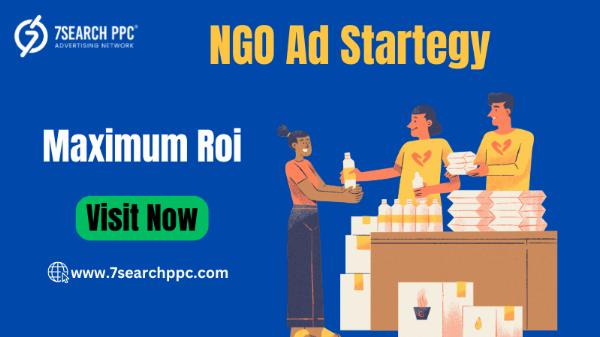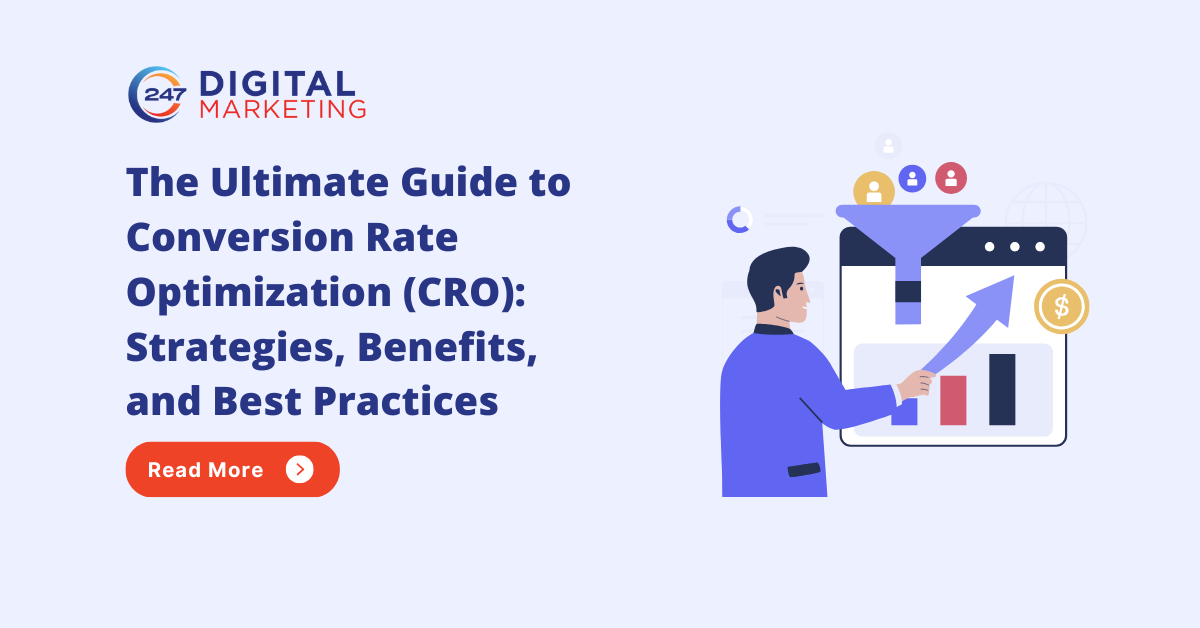How to Measure the Impact of NGO Advertising Efforts

Strong 8k brings an ultra-HD IPTV experience to your living room and your pocket.
In today’s digital age, NGOs (Non-Governmental Organizations) face increasing pressure to demonstrate the impact of their advertising efforts. As donors, volunteers, and the public become more discerning, NGOs need to optimize their advertising strategies. This article will explore how to measure the impact of NGO advertising and provide insights into NGO advertising examples, the best NGO ad platforms, and digital advertising strategies that are most effective for NGOs.
Why Measuring NGO Advertising Impact is Essential
Before diving into how to measure the impact of NGO advertising efforts, it’s important to understand why it's crucial in the first place. NGOs have limited budgets and resources, meaning every dollar spent on advertising should generate measurable returns. Advertising helps NGOs raise awareness, attract donors, and drive engagement with their cause. Without measuring the effectiveness of these efforts, it’s impossible to know whether resources are being wisely allocated.
Measuring advertising efforts helps NGOs:
- Optimize future campaigns: Identifying which channels and messages work best can improve future ad campaigns.
- Maximize return on investment (ROI): NGOs operate with tight budgets, and effective measurement can ensure that advertising spend delivers the highest possible returns.
- Demonstrate transparency: Accountability to donors and stakeholders is crucial. Data on advertising impact offers transparency and proof that funds are being used effectively.
- Attract donors: Effective advertising that demonstrates tangible results encourages more donors to contribute.
Key Metrics to Measure NGO Advertising
The metrics used to measure the impact of NGO advertising efforts will depend on the objectives of the campaign. Below are the key metrics to monitor for various types of advertising:
1. Impressions and Reach
Impressions indicate how many times your ad has been shown to users, while reach tells you how many unique users have seen it. For NGOs, increasing awareness of their cause is often the first step. Impressions and reach help to measure the visibility of your campaign.
- Impressions: This shows how many times an ad is displayed, regardless of whether the user interacts with it.
- Reach: Unlike impressions, reach counts unique users, offering a better understanding of how many individuals your campaign has touched.
2. Click-Through Rate (CTR)
CTR measures the percentage of people who click on your ad after seeing it. A high CTR often indicates that your ad content resonates well with the audience. For NGOs, this is particularly important because it shows interest in the cause, potentially leading to donations or volunteer signups.
3. Conversion Rate
A conversion happens when a user completes a desired action, like donating, signing up for a newsletter, or registering as a volunteer. Conversion rate measures the percentage of ad viewers who take that action. Monitoring this will help you understand how well your NGO advertising campaign is converting awareness into action.
- Donation Conversions: Track how many ad viewers end up donating.
- Volunteer Signups: Count the number of people who sign up to volunteer through your ads.
- Newsletter Subscriptions: Many NGOs use email marketing to keep supporters informed. Monitor how many users subscribe after seeing your ad.
4. Cost-Per-Click (CPC) and Cost-Per-Impression (CPI)
For NGOs operating on tight budgets, knowing how much you’re paying per click (CPC) or per impression (CPI) is vital. CPC tells you how much you pay each time someone clicks on your ad, while CPI reveals the cost of each impression. These metrics are useful in optimizing your ad spend, ensuring that you're getting the most value from your campaign.
5. Cost-Per-Acquisition (CPA)
This measures the total cost to acquire one new supporter, donor, or volunteer through advertising. CPA takes into account the total spend on an ad campaign and divides it by the number of conversions (donations, signups, etc.). For NGOs, a low CPA indicates that your advertising spend is being used efficiently.
6. Engagement Metrics
For NGOs, engagement can be just as important as conversions. Engagement metrics track how users interact with your ad, including likes, shares, comments, and more. Strong engagement indicates that your message resonates with your audience and can help increase visibility organically through social shares.
7. Return on Advertising Spend (ROAS)
ROAS is a key metric for evaluating the overall efficiency of your advertising spend. It’s calculated by dividing the revenue generated by your ad campaign by the total amount spent. For NGOs, ROAS might be calculated by comparing donations received to the amount spent on advertising.
Best NGO Advertising Platforms
Choosing the best NGO ad platform depends on your campaign objectives, target audience, and budget. Here are some of the best digital platforms for NGO advertising:
1. Google Ads
Google Ads is one of the best NGO advertising platforms, especially when using Google Ad Grants, which provides eligible NGOs with up to $10,000 of free advertising each month. With Google Ads, NGOs can place ads on the Google Search Network, Display Network, and YouTube, targeting keywords relevant to their cause.
- NGO advertising examples: Search ads for disaster relief donations, display ads for animal welfare, and YouTube ads raising awareness of climate change.
2. Facebook and Instagram Ads
With billions of users worldwide, Facebook and Instagram are great platforms for targeting individuals interested in specific causes. Both platforms offer robust audience targeting options and are well-suited for visual storytelling, making them a popular choice for NGOs.
- NGO advertising examples: Instagram Story ads encouraging users to donate to children’s education, and Facebook video ads promoting environmental conservation efforts.
3. LinkedIn Ads
For NGOs targeting professionals, corporate donors, or partners, LinkedIn Ads is a valuable platform. LinkedIn allows NGOs to connect with industry leaders, CSR (Corporate Social Responsibility) departments, and potential volunteers in the professional world.
- NGO advertising examples: LinkedIn sponsored content promoting educational seminars or job openings for NGO positions.
4. Twitter Ads
Twitter is another useful platform, particularly for NGOs that engage in advocacy or activism. Twitter’s real-time nature makes it ideal for campaigns focused on current events or causes that are gaining attention quickly.
- NGO advertising examples: Twitter ads raising awareness of human rights violations, and urging followers to support a petition.
5. YouTube Ads
YouTube’s reach is massive, making it a perfect platform for NGOs to share longer-form video content that tells the story of their cause. Pre-roll ads on YouTube can drive donations or raise awareness about important issues.
- NGO advertising examples: Pre-roll ads showcasing NGO impact in underserved communities, ads asking for donations after showing a video of ongoing relief efforts.
6. TikTok Ads
TikTok is rapidly becoming one of the most influential platforms, especially for younger audiences. NGOs looking to target Gen Z and Millennials can create compelling short videos that raise awareness and drive engagement.
- NGO advertising examples: Short, viral videos showcasing a global issue, encouraging users to donate or volunteer.
Steps to Measure the Success of NGO Advertising
Here’s a step-by-step guide to measuring the success of your NGO advertising efforts:
1. Set Clear Objectives
Before launching any advertising campaign, define clear, measurable goals. Are you aiming to increase donations, attract volunteers, or raise awareness of your cause? Identifying your key objectives will inform which metrics are most important.
2. Choose the Right KPIs
Once your objectives are set, choose the key performance indicators (KPIs) that will help you measure your success. If your goal is to increase donations, focus on conversion rate and CPA. If it’s about raising awareness, prioritize reach, impressions, and engagement metrics.
3. Monitor Campaigns in Real Time
Many advertising platforms offer real-time analytics that allows you to monitor campaign performance. This will enable you to make adjustments as needed to optimize your campaigns. For example, if a Facebook ad is generating a high CPC but few conversions, you might want to revise the creative or adjust your audience targeting.
4. Use A/B Testing
A/B testing, or split testing, involves running two different versions of an ad to see which performs better. For NGOs, this could mean testing different headlines, images, or calls to action to find what resonates most with your audience.
5. Track Long-Term Impact
While real-time analytics can help optimize campaigns, it's also important to track the long-term impact of your NGO advertising efforts. This can include analyzing trends over time, looking at donor retention rates, and assessing whether your advertising efforts are leading to sustained engagement with your organization.
NGO Advertising Examples of Success
Here are a few NGO advertising examples to illustrate successful campaigns:
- Charity: Water: Used a combination of Google Ads and social media to raise awareness about the global water crisis, resulting in millions of dollars in donations.
- The World Wildlife Fund (WWF): Leveraged YouTube pre-roll ads to showcase their conservation efforts, leading to increased engagement and donations.
- Amnesty International: Ran Twitter ad campaigns focusing on human rights violations, driving global advocacy and petition sign-ups.
Conclusion
Measuring the impact of NGO advertising is not only about tracking short-term metrics but also understanding how those efforts translate into long-term growth, awareness, and change. The best NGO advertising strategies focus on choosing the right platform, setting clear objectives, and continuously optimizing based on real-time data. By leveraging platforms like Google Ads, Facebook, LinkedIn, and YouTube, and tracking metrics like CPC, CTR, and conversions, NGOs can
FAQ
What is NGO advertising, and why is it important?
Ans. NGO advertising refers to promotional efforts by non-governmental organizations (NGOs) to raise awareness, encourage donations, and drive engagement for their causes. Effective advertising helps NGOs reach their target audience, spread their message, and attract the support they need to achieve their goals. As NGOs often rely on public goodwill and donations, impactful advertising is crucial for sustaining operations and maximizing the reach of their initiatives.
How do NGOs typically advertise their efforts?
Ans. NGOs use a variety of platforms and channels for advertising, including:
- Social media advertising: Platforms like Facebook, Instagram, and LinkedIn allow NGOs to target specific demographics and share impactful content.
- Google Ads: NGOs can use Google Ad Grants, which provide up to $10,000 per month in free advertising on Google Search.
- Native advertising: These are ads designed to match the platform they appear on, making them less intrusive and more likely to be engaged with.
- Print and traditional media: Flyers, posters, and advertisements in magazines or newspapers.
- Partnerships with influencers: Collaborations with social media influencers who align with the NGO's mission.
The best NGO advertising strategy depends on the target audience, budget, and overall goals of the campaign.
What are the key metrics to measure the impact of NGO advertising?
To evaluate the success of NGO advertising efforts, several metrics can be used:
- Impressions: The number of times your ad is displayed.
- Click-through rate (CTR): The ratio of users who click on the ad to the number of impressions.
- Conversions: The number of desired actions taken after interacting with the ad, such as donations or sign-ups.
- Engagement rate: How often users like, comment, or share the content in social media campaigns.
- Return on Ad Spend (ROAS): The revenue generated for every dollar spent on advertising.
- Cost per conversion: The average cost incurred to get one conversion, such as a donation or petition signature.
These metrics help NGOs understand which platforms and campaigns are yielding the best results.
How can I track conversions from NGO advertising?
Ans. Conversions, such as donations, newsletter sign-ups, or petition signatures, can be tracked using various tools:
- Google Analytics: By setting up goals in Google Analytics, you can track how many visitors from your ads complete specific actions, such as making donations or signing up for newsletters.
- UTM parameters: These are tracking codes added to your URLs that help identify which campaigns, ads, or channels are driving the most conversions.
- Social media insights: Platforms like Facebook and Instagram provide insights into how many people take action after seeing your ad.
- Google Tag Manager: This tool allows you to manage and deploy marketing tags (snippets of code or tracking pixels) on your website without modifying the code directly.
Using these methods, NGOs can gather insights into which ads are driving the most engagement and tailor their future campaigns accordingly. maximize their ad budgets and truly make a difference.
Note: IndiBlogHub features both user-submitted and editorial content. We do not verify third-party contributions. Read our Disclaimer and Privacy Policyfor details.







